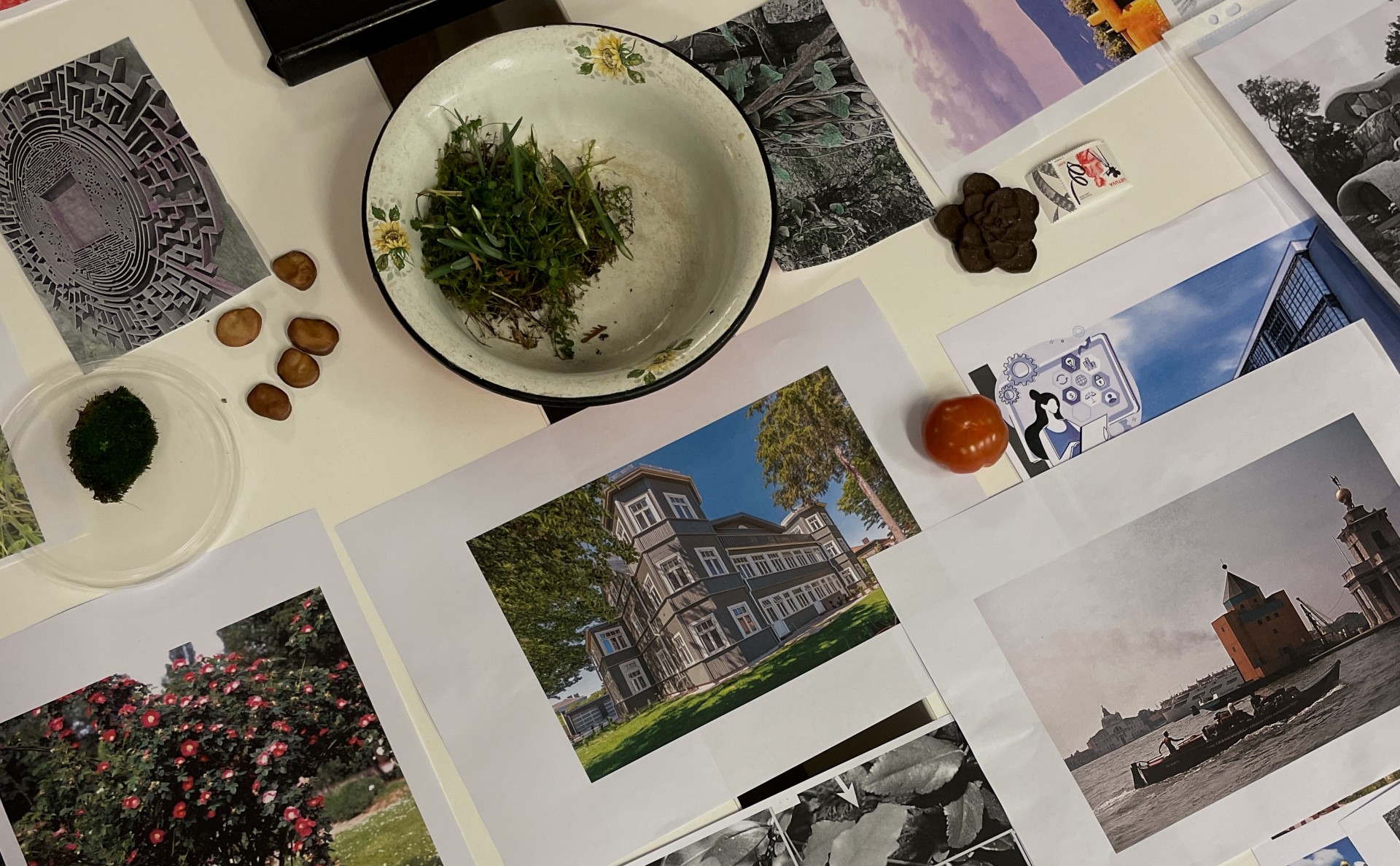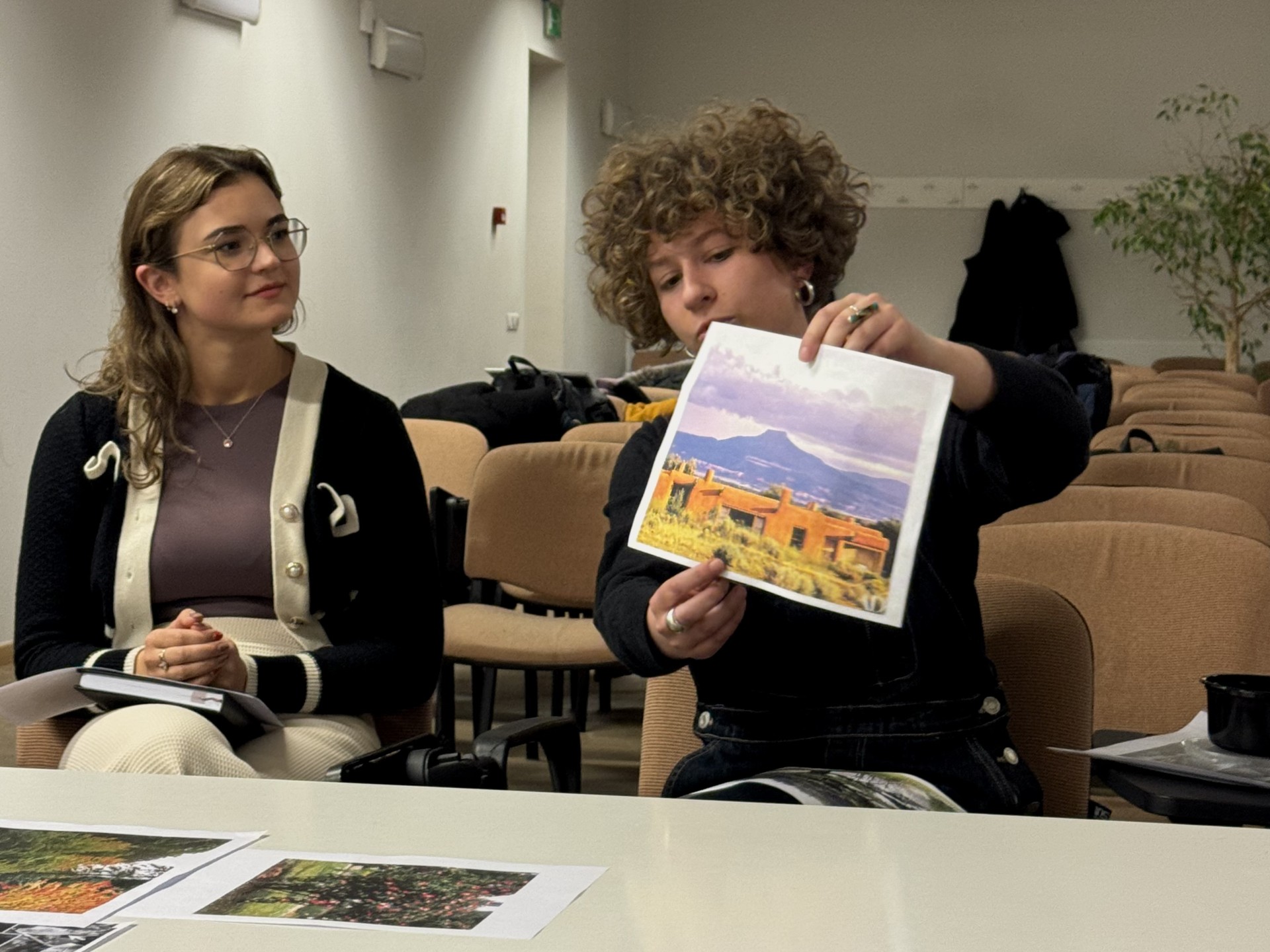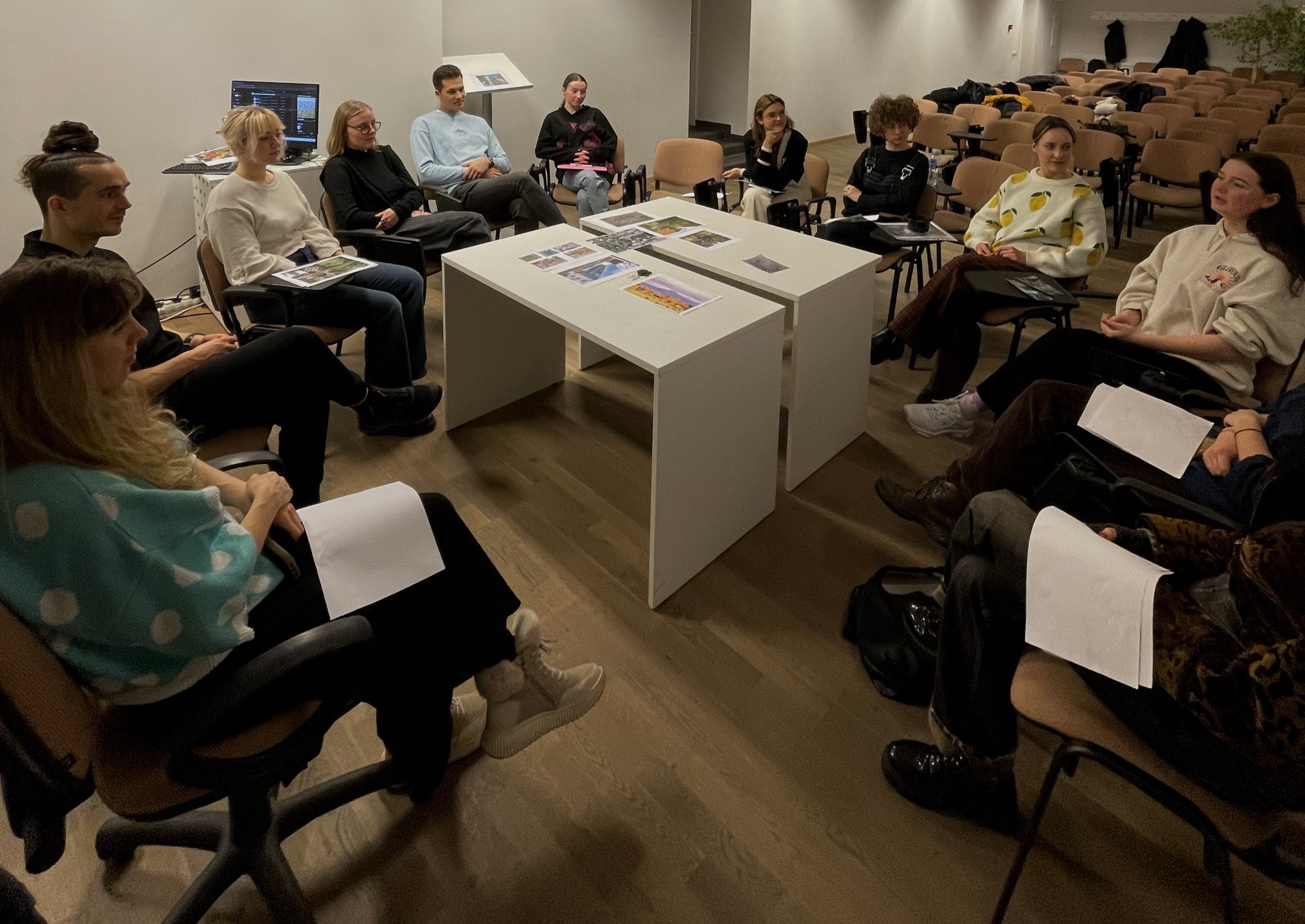Inside LABT’s Moodboarding Exercise at VMU

Vytautas Magnus University hosted a meeting by LABT (Laboratory for [Living] Tree [as] Architecture): an international student laboratory aiming to rethink ecological practices and architecture as a living system. It is part of the Lithuanian Pavilion at the 2025 Venice Biennale of Architecture, one of the most prestigious events in the field of architecture, where innovative sustainable architectural ideas from around the world are showcased. The meeting was sponsored by the Transform4Europe Alliance.
The goal of this project is to bring together students from various disciplines and create a shared vision where nature and architecture function as interconnected systems. Sometimes ideas come not when you look for them, but when you watch them naturally blend with the thoughts of others. Moodboarding is a great way to visually present your concepts, but it is also an environment that allows individual ideas to become part of a shared organic vision. Does it remind you of an ecosystem, where everything blends and connects with each other? This is also what happens with moodboarding, where everyone’s ideas supports one another. During this exercise, the approach creates a new, common field of knowledge that is not limited to the framework of a specific discipline. This is especially important in innovation, creative processes and sustainability research, where it is necessary to connect different areas into a unified system. That is why it is so relevant for “Laboratory for [Living] Tree [as] Architecture“ (LABT), on the basis of which the February 13th meeting was organized at the VMU Faculty of Arts.

LABT is a transdisciplinary research laboratory that unites and connects various scientific organizations and universities through an innovative platform, while promoting a dialogue between art, architecture, science, and at the same time ecology and sustainability. The aim of this project is to establish a transdisciplinary and international student laboratory that would rethink ecological practices from the posthumanist perspective, ultimately expressing all its outputs in a symposium at Biennale Architettura 2025. Searches, experiments, and collaborations that are taking place in the laboratory create new forms of practice, form the basis for the birth and development of new innovative ideas, and change the established learning model. One of the most important aspects for the LABT community is truthful connection and free thinking. Therefore, regular meetings, such as the one held on February 13, strengthen the connections between participants, motivate experimental activities, inspire further research and the search for deeper connections between living architecture and creative processes.
The February meeting marked an important milestone in our ongoing project. Gathered at the VMU Faculty of Arts, the participants aimed to foster an open and creative dialogue where all ideas and opinions were heard. Sitting together in a harmonious circle, all the members began the meeting with a reflection and a kind of discussion about the presentation held on February 7th on the topic “Towards More Sustainable Residential Areas: Indicators of Neighbourhood and Block Sustainability”, which was organized by URBARIA. This project of theirs is the largest sustainability indicator project implemented in the Nordic and Baltic countries, activating a transdisciplinary team of over 50 researchers for joint work. The lab students who participated in this online meeting shared their thoughts and insights about the sustainability measurement criteria discussed by Laura Uimonen, whose sustainability indicator is dead wood in urban environments. This sparked conversations about the future of sustainable cities and the significance of the project for neighborhood-level sustainability indicators at a scientific level.
The official part of the meeting continued with LABT initiators and developers Gytis and Rūta, who reintroduced the project and its possibilities. This was followed by introductions from all participants, 14 in total, each sharing their goals and aspirations for the laboratory. The students themselves come from various programs – from Landscape Design to Creative Industries and Media Arts. The next step was creating a moodboard. Participants arrived prepared, bringing completed tasks – their project ideas, favorite plants, and architecture visualizations. Each participant presented their chosen item randomly, starting with Gytis, who introduced the wine plant – “Boquila”, which adapts to its environment. After each presentation, a discussion followed, allowing participants to ask questions and expand on the ideas. Due to the enthusiastic interest of colleagues and deep personal insights, the discussion took longer than expected. Interestingly, the bindweed was the choice of many… A beautiful coincidence or a sign that like-minded people are joining forces there? The plants were not chosen randomly – they represent more than just greenery to us, possibly even reflecting our own character traits. The presented architectural objects felt like each person’s “fairy tale place”, where everyone could feel safe. And the vision of the project is an important step toward changing the world.

There was no shortage of amusing moments from the workshop: from the story about the sand brought from America and the mishaps in the thorn bushes to sustainable solutions in art creation, the silent retreat, and even gladiator battles. The participants presented many interesting ideas and shared fun concepts. One of them even brought her own symbol – a flower-shaped attribute made of a mixture of coffee grounds and starch, where the latter stood for glue. The girl explained that when she paints, she realizes how much plastic she is putting into the world, so in search of alternatives, she created such a natural artistic combination. These stories reflect the creative process, the shared enthusiasm, and the lightness that was present throughout the meeting.
This meeting further demonstrated that the team’s goal is shared – to help the planet and contribute to its well-being. After completing the task, the participants left not only driven by this common goal, but also in a positive mood and with a variety of new ideas. The discussions and collaboration provided inspiration and encouraged further reflection, which undoubtedly contributed to their personal and professional growth. Most importantly, this meeting confirmed that transdisciplinarity is not only beneficial, but also necessary in order to create innovative, vibrant and sustainable solutions for the future. It can be said that most of the chosen plants and architectural objects are oriented towards adaptation and growth, which shows that those gathered here interact with their hearts and a common point of view. This is a community valuing experimental thinking and solidarity. It seems that the laboratory itself is becoming a living organism.
LABT is organized by Vytautas Magnus University in collaboration with 3022, enabled by Trasform4Europe alliance, supported by Forest 4.0. This project is a part of Lithuanian Pavilion at Venice Architecture Biennale 2025.
More information about the laboratory and how to join: LABT for students.
Text by VMU students Ugnė Bertulytė ir Kamilė Rimdeikaitė












